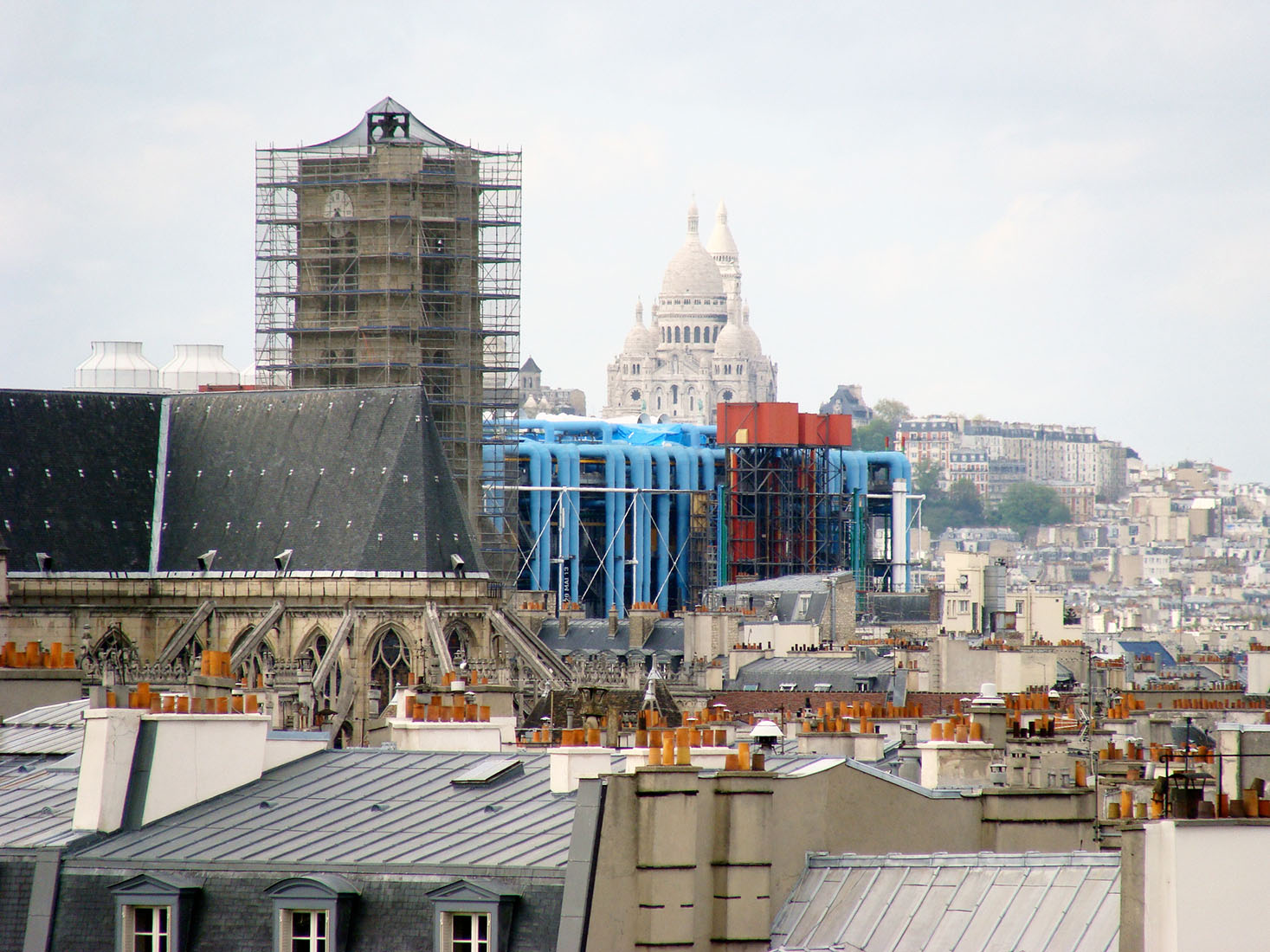 |
 |
 |
 |


Centre Georges Pompidou - Paris
19 Rue Beaubourg, Paris
1971-1977
The Centre national d'art et de culture Georges Pompidou, colloquially Centre Pompidou, is a state-owned arts and cultural center in the 4th arrondissement of Paris.
It was designed on the initiative of the former French President Georges Pompidou by the architects Renzo Piano, Richard Rogers and Gianfranco Franchini.
The jury's decision in favor of the project Piano / Rogers had fallen on July 15 1971. After five years of construction, it was opened on 31 January 1977.
The task of the Centre Pompidou is to guarantee free access to knowledge for French citizens as well as foreigners. It houses the Musée National d'Art Moderne,
the Bibliothèque Publique d'Information, the music research center IRCAM, a children's workshop, cinema, theater and lecture halls, a bookstore, a restaurant and a café.
The structural parts and pipes of the building technology are arranged visible on the outsides of the building. All these elements are coloured according to its significance:
the structure and ventilation pipes are painted white, the circulation (stairs, escalators) are red, yellow is used for electrical, water pipes are blue and the tubes of
the air conditioning are green. As a consequence of the concept with external structure and building services, the large floor spaces on the inside remain
largely devoid of props and shafts. Thus they can be used flexibly. While the pipes of the building run largely on the east side, on the western side is located
a partially red roofed escalator that runs diagonally across the entire facade.
This new type of facade and its design were controversial for the time of origin. Many contemporaries felt reminiscent of factories and considered the architecture
as inappropriate in terms of location and use. The building is considered as a first significant milestone in the architectural discourse disengaging from modernism
and postmodernism. The competition design imagined height-adjustable floors and a large screen façade as an interface between the museum and the city.
For lack of funds these features refrained. The building received huge attention and launched the careers of both architects, which later came to great fame.
It was designed on the initiative of the former French President Georges Pompidou by the architects Renzo Piano, Richard Rogers and Gianfranco Franchini.
The jury's decision in favor of the project Piano / Rogers had fallen on July 15 1971. After five years of construction, it was opened on 31 January 1977.
The task of the Centre Pompidou is to guarantee free access to knowledge for French citizens as well as foreigners. It houses the Musée National d'Art Moderne,
the Bibliothèque Publique d'Information, the music research center IRCAM, a children's workshop, cinema, theater and lecture halls, a bookstore, a restaurant and a café.
The structural parts and pipes of the building technology are arranged visible on the outsides of the building. All these elements are coloured according to its significance:
the structure and ventilation pipes are painted white, the circulation (stairs, escalators) are red, yellow is used for electrical, water pipes are blue and the tubes of
the air conditioning are green. As a consequence of the concept with external structure and building services, the large floor spaces on the inside remain
largely devoid of props and shafts. Thus they can be used flexibly. While the pipes of the building run largely on the east side, on the western side is located
a partially red roofed escalator that runs diagonally across the entire facade.
This new type of facade and its design were controversial for the time of origin. Many contemporaries felt reminiscent of factories and considered the architecture
as inappropriate in terms of location and use. The building is considered as a first significant milestone in the architectural discourse disengaging from modernism
and postmodernism. The competition design imagined height-adjustable floors and a large screen façade as an interface between the museum and the city.
For lack of funds these features refrained. The building received huge attention and launched the careers of both architects, which later came to great fame.